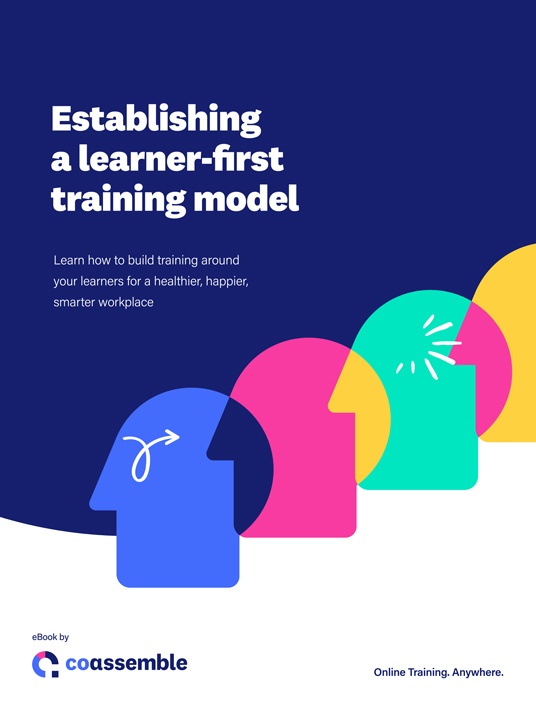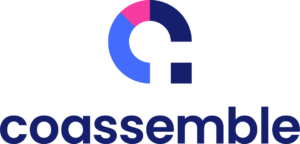What Is Learner-First Training? How Can It Be Delivered?
The learner-first training model is simple but radically different from the way a lot of organizations train.
In a learner-first training approach, trainers always start with the learner. The learner is the basis for every aspect of a company's training strategy, from the company's learning goals to their learner pathways, to the tools that they choose to train and the way they design their training.

Whilst this may seem like common sense, it's actually not what a lot of trainers do.
Planning Before Delivery
In the learner-first approach, training is only delivered after the following stages:
- Evaluate
Create learner personas, identify learning goals - Build
Structure learner pathways, choose learning tools - Design
Plan learning design, fulfill design requirements - Test
Ensure training meets learning objectives
We’ve written articles on the steps above so that you can step through each of these stages with ease. If you’ve completed the above already, you’ll find that answering the questions in this article is a breeze; by preparing, you’ve done all the hard work already, and know all the key components of your training program prior to rollout.
Let’s get down to delivery.
What’s The Rollout Model?
The first question to answer when delivering your training program is around your rollout model.
Is training taking place online-only, or are there also offline components? This will affect how you time your training delivery, and how you structure it. If there are offline components to your training program, you’ll need to deliver your training accordingly. For example, if your program runs for 6 weeks, and includes weekly offline workshops, you may want to deliver the online component in 6 parts, with each component released at the end of each workshop.
Is your program a blended learning model, or self-guided? Whilst this may appear to be the same question as online or offline, some online programs contain virtual classroom elements, or other learner-trainer communication sessions such as Zoom meetings, webinars, and live chat sessions. Again, these will affect both the timing and structure of your training delivery, as learner-trainer sessions have to take place at pre-set times.
If your training does not involve any pre-set times or offline components, then will it be a staged delivery or a bulk delivery? In other words, will you make your entire training program available at once, or will it be drip fed over a period of time?
Is your program a rolling or fixed delivery model? A rolling delivery model looks something like this:
- ‘An employee can be enrolled in your training program at any time and has 21 days to complete it from the date of their enrolment.’
A fixed delivery model looks more like this:
- ‘All employees are enrolled into your training program at a set date, and they must all complete in by a set date.’
Note that not all training programs are rolling or fixed delivery models as some are not time-based at all and let learners learn at their own pace.
There are no right answers to the questions above; each program will be different. However, it will be far easier to answer the questions above if you’ve identified your learning goals and structured your learner pathways, as you’ll have a clear picture of what your program will look like and thus, how it should be delivered.
Is Your Tech Ready For Delivery?
Most training programs require a Learning Management System for the delivery and tracking of content. But what other tech do you need? Are you using any integrations, like a webinar or video conferencing tools, surveys, or email platforms? Are these set up and properly branded? If you haven't properly planned what tools you'll be using to train yet, you may want to check out our article on choosing the right tools for your learners.
If you’ve read our article on testing your training prior to rollout [1], you will have ensured that your full tech stack is ready to go on the delivery day.
What’s Your Training Structure?
This question refers to the grouping and structure of your training delivery. Who are your learner groups? How are you grouping them in order to accurately track each group’s progress and results? Does each group need different content and structure, or can they be served the same resources at the same times?
If you’ve defined your learner personas, you should know exactly who your learner cohorts are and how their training delivery should differ, whilst your LMS should be able to help when it comes to enrolling and tracking different learner groups.
Secondly, you’ll need to look at your training structure on the trainer-side. Do your learner groups have the same trainers, or will you need different trainers for each group? What are your trainers' permissions? Can they read and write content, or just administer training? Will they be conducting online or offline workshops in conjunction with your online delivery? If so, have you scheduled times for these in-person sessions and structured your delivery accordingly?
What Are Your Timelines?
Now that we’ve determined your rollout model, ensured your tech is ready for delivery and outlined your delivery structure, let’s look at timelines. When is the first component (or your entire program if you’re releasing it in bulk) going live? Is there a fixed completion date for your program (there probably will be if you’re running compliance-related training or similar)? Beyond your training program, will you be conducting refresher training?
These questions should help you outline a timeline for your training delivery, and add dates and delivery times into your LMS. If your rollout model is fixed or rolling, then you’ll need to include content availability dates into your timeline and plug them into your LMS.
What's Next?
Once you’ve finished the steps above, you’ll be able to set up your content for delivery and being training rollout of your initial content. Once that’s underway, it’s time to scale your content and evaluate it to see if you hit your learning goals!
Stay tuned for an article on how to scale your training delivery in the next few days.
Wondering how to implement your own learner-first training model? Download the eBook Establishing A Learner-First Training Model and discover the step by step process on how to perfectly execute the goal of making the learner have success. Also, discover how to incorporate career mapping into your digital training strategy using a learner-first approach through the Webinar 6 Steps To Incorporate Career Mapping Into Your Digital Training Strategy.
Read more:







